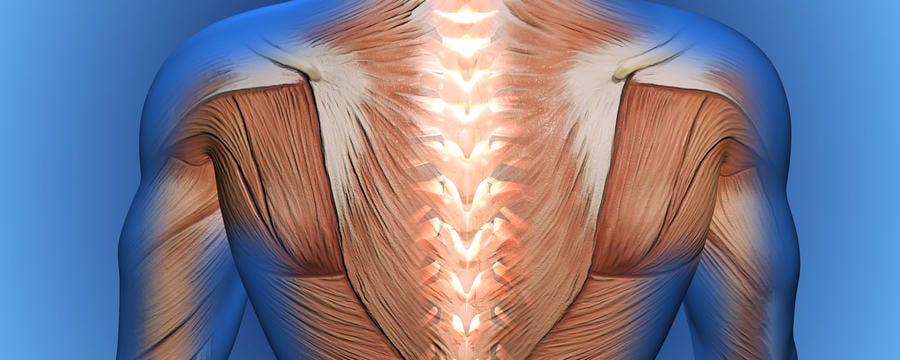The top foods for healthy bones and muscles

In this article, we’ll look at the foods you can eat for healthy bone and muscles.
We’ll be looking at the typical nutrient content of a range of different foods and have provided this information in tables. This is a lot to take in at once so we’ve also provided this information as a PDF which you can download from the bottom of the page for later reference.
Calcium
Good sources of calcium include:
- Milk, cheese and other dairy foods including cheese, yoghurt and ice cream
- Green leafy vegetables such as broccoli, cabbage and okra (but not spinach)
- Soya beans, tofu and soya drinks with added calcium
- Nuts
- Bread and anything made with fortified flour
- Fish where you eat the bones – such as sardines and pilchards.
Many cereal products in the UK are fortified with calcium carbonate. The Bread and Flour Regulations require that, subject to certain exceptions, calcium carbonate must be added to all wheat flour, whether or not mixed with other flour, for fortification. Calcium carbonate does not need to be added to self-raising flour which has a calcium content of not less than 0.2%, to wholemeal flour or to wheat malt flour.
The table below shows how much calcium is in a typical portion of a selection of foods that are good sources of calcium (mg = milligram = 1 thousandth of a gram). They are listed in descending order by the amount of calcium in a typical portion (highlighted column), and you can also compare how much calcium is in a standard amount (mg/100 g) of the foods.
| Food | Calcium (mg/100g) | Typical portion (g or ml) | Calcium per portion (mg) | Calcium % of adult daily requirement |
|---|---|---|---|---|
| Sardines, canned in brine & drained | 679 | 50g | 340 | 49% |
| Cheddar cheese | 739 | 30g | 222 | 32% |
| Soya non-dairy alternative to milk, unsweetened, fortified | 120 | 200ml | 240 | 34% |
| Cow’s milk, Semi-skimmed | 120 | 200ml | 240 | 33% |
| Cheese, feta | 360 | 40g | 144 | 21% |
| Curly kale, boiled | 150 | 80g | 120 | 17% |
| Porridge, oats made with skimmed milk | 117 | 100g | 117 | 17% |
| Pink salmon, canned in brine, drained | 109 | 106g | 116 | 17% |
| Sesame seeds | 670 | 12g | 80 | 11% |
| Herring, grilled | 79 | 100g | 79 | 11% |
| Bread, white, sliced | 88 | 50g | 44 | 6% |
| Eggs, boiled (from chicken) | 46 | 60g | 28 | 4% |
| Beans, red kidney, dried, boiled in unsalted water | 37 | 35g | 13 | 2% |
| Cod liver oil | 0 | 3g | 0 | 0% |
Vitamin D
Good food sources of vitamin D are:
- Oily fish – such as salmon, sardines, herring and mackerel
- Red meat
- Liver
- Egg yolks
- Fortified foods such as most fat spreads and some breakfast cereals
In the UK, cows’ milk is generally not a good source of vitamin D because it isn’t fortified, as it is in some other countries. A number of yoghurt products are available fortified with vitamin D.
The table below shows a selection of foods that can provide 10% or more of the recommended daily intake of vitamin D from the diet. The first column shows the food, the second how much vitamin D is found in a standard amount of the food (100 g), the third shows a typical portion size in grams, the fourth shows the amount of vitamin D in a typical portion, and the fifth shows the percentage of the recommended daily amount of vitamin D for a healthy adult that is found in a typical portion.
| Food | Vitamin D (mcg/100g) | Typical portion (g or ml) | Vitamin D per portion (mcg) | % of the adult daily requirement |
|---|---|---|---|---|
| Herring, grilled | 16.1 | 100g | 16.1 | 161% |
| Pink salmon, canned in brine, drained | 13.6 | 100g | 14.4 | 144% |
| Cod liver oil | 210 | 3g | 6.3 | 63% |
| Sardines, canned in sunflower oil, drained | 3.6 | 90g | 3.2 | 32% |
| Eggs, yolk, boiled (from chicken) | 12.6 | 20g | 2.5 | 25% |
| Eggs, boiled (from chicken) | 3.2 | 60g | 1.9 | 19% |
| Soya non-dairy alternative to milk, unsweetened, fortified | 0.8 | 200ml | 1.6 | 16% |
| Pork, chop, lean and fat | 1.1 | 120g | 1.3 | 13% |
| Cornflakes | 4.7 | 25g | 1.2 | 12% |
| Cheddar cheese | 0.3 | 30g | 0.1 | 1% |
| Beans, red kidney, dried, boiled in unsalted water | 0 | 35g | 0 | 0% |
| Curly kale, boiled | 0 | 80g | 0 | 0% |
(mcg = micrograms = 1 millionth of a gram)
Protein
In the UK, about one-third of dietary protein comes from plant sources and the other two-thirds comes from animal sources. The protein content of nuts, dried peas, and beans are high and compares favourably with the protein content of meats. After soaking in water, the proportion of protein in dried peas and beans is reduced, but they still are an excellent source of protein.
While cereals contain less protein per 100 g than meats and beans, they are also a significant source of protein for many people in the world where they make up a large part of the diet. The table below shows the average protein content of selected uncooked foods.
| Food | Protein (g/100 g) | Typical portion (g or ml) | Protein per portion (g) | % of the adult daily requirement |
|---|---|---|---|---|
| Turkey, breast, fillet, grilled, meat only | 35 | 120g | 42 | 84% |
| Chicken, breast, grilled without skin, meat only | 32 | 120g | 42 | 77% |
| Pork, chop, lean only | 32 | 120g | 42 | 76% |
| Pork, chop, lean and fat | 29 | 120g | 35 | 70% |
| Cod, baked | 24 | 120g | 35 | 70% |
| Beef, stewing steak, stewed, lean and fat | 29 | 90g | 26 | 53% |
| Lamb shoulder, diced & grilled, lean and fat | 29 | 90g | 26 | 51% |
| Pink salmon, canned in brine, drained | 24 | 106g | 25 | 50% |
| Sardines, canned in sunflower oil, drained | 23 | 90g | 21 | 42% |
| Herring, grilled | 20 | 100g | 20 | 40% |
| Quorn | 14 | 120g | 17 | 34% |
| Cheese, cheddar | 25 | 40g | 10 | 20% |
| Eggs, boiled (from chicken) | 13 | 60g | 7.6 | 15% |
| Cows milk, semi-skimmed | 4 | 200ml | 7.0 | 14% |
| Cheese, feta | 16 | 40g | 6.2 | 12% |
| Baked beans, reheated | 5 | 100g | 5.0 | 10% |
| Soya non-dairy alternative to milk, unsweetened, fortified | 2 | 200ml | 4.8 | 9.6% |
| Almonds | 21 | 22g | 4.6 | 9.3% |
| Porridge oats, made up with skimmed milk | 5 | 100g | 4.6 | 9.2% |
| Peas, frozen, boiled | 6 | 70g | 3.9 | 7.7% |
| Eggs, yolk, boiled (from chicken) | 17 | 20g | 3.3 | 6.7% |
| Beans, red kidney, dried, boiled in unsalted water | 8 | 35g | 2.9 | 5.9% |
| Sesame seeds | 18 | 12g | 2.2 | 4.4% |
| Bread, white, sliced | 4 | 50g | 2.0 | 4.0% |
| Curly kale, boiled | 2 | 80g | 1.9 | 3.8% |
| Cornflakes, fortified | 7 | 25g | 1.8 | 3.6% |
| Cod liver oil | 0 | 3g | 0 | 0.0% |
The Musculoskeletal System: The Science of Staying Active into Old Age

The Musculoskeletal System: The Science of Staying Active into Old Age


Reach your personal and professional goals
Unlock access to hundreds of expert online courses and degrees from top universities and educators to gain accredited qualifications and professional CV-building certificates.
Join over 18 million learners to launch, switch or build upon your career, all at your own pace, across a wide range of topic areas.
Register to receive updates
-
Create an account to receive our newsletter, course recommendations and promotions.
Register for free







